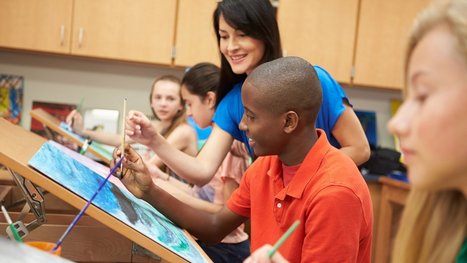When you’re the big fish, it’s not OK to pick on the little fish just because you can.
That’s an important lesson for everyone. But some Houston first-graders got a particularly vivid demonstration in the form of a musical puppet show, which featured fish puppets and an underlying message about why it’s wrong to bully others.
The show left an impression on the students at Codwell Elementary, according to their teacher Shelea Bennett. “You felt like you were in that story,” she said. “By the end of the story they were able to answer why [bullying] wasn’t good, and why you shouldn’t act this way.”
The puppeteer’s show was part of an effort to expand arts education in Houston elementary and middle schools. Now, a new study shows that the initiative helped students in a few ways: boosting students’ compassion for their classmates, lowering discipline rates, and improving students’ scores on writing tests.
It’s just the latest study to find that giving students more access to the arts offers measurable benefits. And adding time for dance, theater, or visual arts isn’t at odds with traditional measures of academic success, according to the research — which amounts to one of the largest gold-standard studies on arts education ever conducted.
“Arts learning experiences benefit students in terms of social, emotional, and academic outcomes,” write researchers Dan Bowen of Texas A&M and Brian Kisida of the University of Missouri.
The study, released Tuesday through the Houston Education Research Consortium, looked at elementary and middle schools — which predominantly served low-income students of color — that expressed interest in participating in Houston’s Arts Access Initiative. There appeared to be significant need: nearly a third of elementary and middle schools in the district reported lacking a full-time arts teacher.

|
Scooped by John Evans |
Rachel Mazzotta's curator insight,
June 18, 2019 9:40 AM
The power of the arts to create empathy in students as well as build other cognitive skills.
Sign up to comment



 Your new post is loading...
Your new post is loading...










